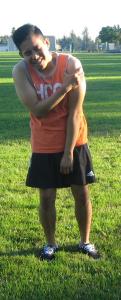Brachioradialis pain is described as shooting pain in the elbow or forearm. In most cases, the brachioradialis muscle has been subjected to overuse.
Characteristics
Generally, brachioradialis pain is accompanied by significant tautness of the forearm muscles. This can trigger discomfort in the elbow and forearm. The pain becomes intense if the forearm muscles are used. There is also achiness in the rear part of the hand, thumb and index finger.
What are the causes?
The usual root of brachioradialis pain is overexertion. If the brachioradialis muscle is overloaded for prolonged periods of time, it becomes tender and painful.

Even though manual labor and weightlifting are the usual causes, other repetitive motions such as in tennis or typing on a keyboard can trigger the symptoms as well.
It can also be brought about by physical injuries such as a fall or direct strike from a hard object.
Management of brachioradialis pain
Similar with other overexertion injuries, the earlier treatment is started, the better the outcome.
The RICE method is the commonly used approach:
- Rest – it is vital to limit movement during the 72 hours after the start of the pain
- Ice – apply an ice pack for 20 minutes every 2 hours to lessen the swelling and inflammation
- Compression – wrap the affected forearm with a bandage to reduce the swelling
- Elevation – the forearm and elbow should be raised to minimize the swelling
As the brachioradialis muscle recuperates and the discomfort subsides, specific workouts can improve muscular strength.
What is the outcome?
If there is pain in the forearm or elbow when performing simple tasks such as using a screwdriver or turning a doorknob, it is likely that the brachioradialis muscle has been overused.
In most cases, the injury can be managed at tome. In case the swelling and pain is persistent, a doctor should be seen for further assessment.
